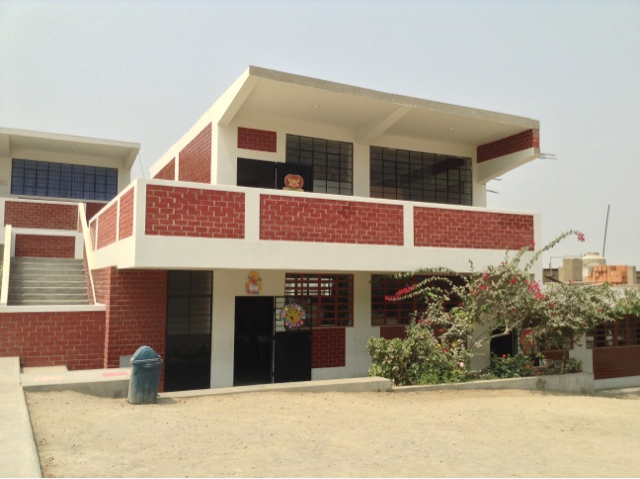On our way to Jodhpur we stopped at Ranakpur - a stunning complex of Jain temples built in the 15th century. The largest temple, Chaumukha Mandir is built from almost translucent white marble and is intricately carved throughout and it is easy to see why the place is an important pilgrimage site for Hindus.
The city of Jodhpur is famous for the impressive Mehrangarh fort and for its blue hued buildings... Traditionally, only the homes of Brahmin (priests: the highest caste) were blue but owing to the alleged cooling and mosquito repelling properties of the colour, the trend caught on and now any Tom, Dick, Harry and Vikram can join in. Mehrangarh dominates the skyline, rising seamlessly from the mound that it's built on. A sweaty ten minute walk up a hill in the blistering heat gets you to the main gate where you can get your entrance ticket along with complimentary and quite impressive audio tour which includes interviews with the current Maharaja of Jodhpur who opened the gates of the fort to the public (thereby giving lucky locals plenty of photo opportunities with us strange white folk- see photo of them taking a photo with me below). Directly inside the forts old main gate are two sets of red handprints which give a creepy impression when first viewed and become even more chilling when you learn the history of them: They are the handprints of the widows of Maharajas as they leave the palace for the final time with the body of their husband and throw themselves on their funeral pyres... This practice of self-immolation was known as sati and was stopped after the last of the unlucky widows died this way in 1843. Inside the fort you get an idea of the grandeur that they spent their lives in before their fiery end - everything from natural air conditioning created from moistened and perfumed blinds, grand manicured gardens, marble latticed walkways and beautifully crafted palanquins for when walking was too much of a chore.
From the Blue City we moved on to the Pink City which is the current capital of Rajasthan. In Jaipur we visited the palace of Amber (meaning sky) which, although interesting and beautiful, just about tipped us over the edge of architectural saturation. Instead of heading to the City Palace after, we decided to brave the bazaars and cut our Indian haggling teeth... By the afternoon we were pros and I'm pretty sure that I can now get ANYTHING for a tenth of the stated price given enough time and patience... Who am I kidding, we probably still got massively ripped off (it's hard to tell when things seem so cheap!) - but we ended up with lots of pretty things so no complaints.
The city of Jodhpur is famous for the impressive Mehrangarh fort and for its blue hued buildings... Traditionally, only the homes of Brahmin (priests: the highest caste) were blue but owing to the alleged cooling and mosquito repelling properties of the colour, the trend caught on and now any Tom, Dick, Harry and Vikram can join in. Mehrangarh dominates the skyline, rising seamlessly from the mound that it's built on. A sweaty ten minute walk up a hill in the blistering heat gets you to the main gate where you can get your entrance ticket along with complimentary and quite impressive audio tour which includes interviews with the current Maharaja of Jodhpur who opened the gates of the fort to the public (thereby giving lucky locals plenty of photo opportunities with us strange white folk- see photo of them taking a photo with me below). Directly inside the forts old main gate are two sets of red handprints which give a creepy impression when first viewed and become even more chilling when you learn the history of them: They are the handprints of the widows of Maharajas as they leave the palace for the final time with the body of their husband and throw themselves on their funeral pyres... This practice of self-immolation was known as sati and was stopped after the last of the unlucky widows died this way in 1843. Inside the fort you get an idea of the grandeur that they spent their lives in before their fiery end - everything from natural air conditioning created from moistened and perfumed blinds, grand manicured gardens, marble latticed walkways and beautifully crafted palanquins for when walking was too much of a chore.
From the Blue City we moved on to the Pink City which is the current capital of Rajasthan. In Jaipur we visited the palace of Amber (meaning sky) which, although interesting and beautiful, just about tipped us over the edge of architectural saturation. Instead of heading to the City Palace after, we decided to brave the bazaars and cut our Indian haggling teeth... By the afternoon we were pros and I'm pretty sure that I can now get ANYTHING for a tenth of the stated price given enough time and patience... Who am I kidding, we probably still got massively ripped off (it's hard to tell when things seem so cheap!) - but we ended up with lots of pretty things so no complaints.






















































